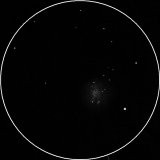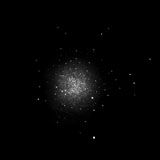
| MESSIER 2 |
|---|
RA: |
21h 33m 30s |
|
DEC: |
-00° 49' 00'' |
|
Type: |
Globular cluster |
|
NGC: |
7089 |
|
Magnitude: |
6.50 |
|
Surface brightness : |
11.6 |
|
Apparent dimensions : |
12'x12' |
|
Distance: |
37,500 ly |
|
Messier 2 (also known as M2 or NGC 7089) is a globular cluster in the constellation Aquarius. It was discovered by Jean-Dominique Maraldi in 1746. M2 is, under extremely good conditions, just visible to the naked eye five degrees north of the star Beta Aquarii. Binoculars or small telescopes will identify this cluster as non-stellar while larger telescopes will resolve individual stars, of which the brightest are of apparent magnitude 13.1. M2 was discovered by the French astronomer Jean-Dominique Maraldi in 1746 when he was observing a comet with Jacques Cassini. Charles Messier rediscovered it in 1760 and thought it a nebula without any stars associated with it. William Herschel was the first to resolve individual stars in the cluster in 1794. Spanning 175 light-years across, M2 is one of the larger globular clusters known. The cluster is rich, compact, and significantly elliptical. At 13 billion years old it is also one of the older globulars associated with the Milky Way Galaxy. The distance of M2 is about 37,500 light-years away from Earth and the cluster contains about 150,000 stars. |
||
OTHER SKETCHES |
|||||
 |
|||||
Messier 2 (2006.) |
|||||
VEDRAN VRHOVAC© 2006.-2007. |
